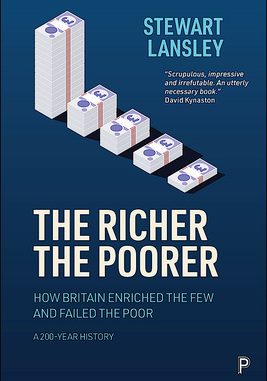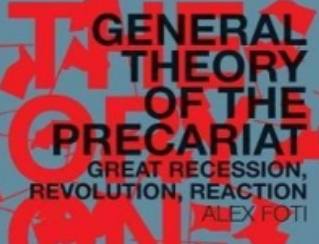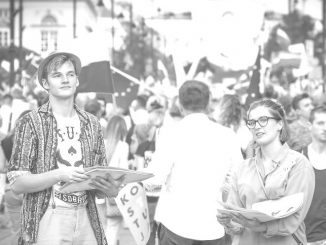
Book Review by Mathew D. Rose
Michael Hudson is one of the most brilliant political economists of our time. In his prodigious and prolific thinking one often encounters a thought, many just one sentence, that puts everything into a new perspective. In one of his many podcasts he maintained that since the Norman Conquest of Britain in 1066 the British people have never recovered their sovereignty or self-determination. If you look at today’s Britain’s wealthiest citizens, many trace their wealth, mainly through the possession of vast tracts of land, to this day. Until the middle of the 19th century the scions of these Norman conquerors held the political and economic reins of Britain in their hands. Nowadays the prime minister and cabinet contain few such nobles, however their political reach has been little reduced. With the arrival of industrial capitalist wealth, they have adapted to the interlopers, or better said, the industrial capitalists have integrated themselves into the Norman oligarchy.
Although Stewart Lansley in his book “The Richer, The Poorer” limited his time horizon to the past two centuries, the period he analyses is simply the continuation of this political reality. What he describes is the transition from oligarchy to plutocracy in Britain. This however was accompanied by a Christian evangelical movement of the burgeoning middle class that brought a movement for social reform with it that continued into the twentieth century. Lansley assesses these developments rather soberly: “For most of the last two hundred years, Britain has been a high-poverty, high-inequality nation”.
Following the harrowing threat of being conquered by the Germans in World War II there was a change in class consciousness in Britain. This was especially true of the middle class who spent almost six years in close contact with the working class in the British army, both bringing great sacrifice, as did the working class, especially women, on the home front. After the war both classes were convinced that the crass inequality and poverty in pre-war Britain could not continue. This resulted in a post-war attempt to create a more egalitarian society in Britain – maybe not as egalitarian as popularly portrayed, as argued by Lansley in his book.
This eventually crumbled before it had really taken off, even under Labour governments, until its complete collapse following the election of Margaret Thatcher, Britain’s first female prime minister, and the Tory party’s neo-liberal policies beginning in 1979, prompting the return of free markets and hyper-individualism. While Lansley decries “For four decades, Britain has been locked in a second long wave of ‘high poverty’ and ‘bad inequality’, what the book is really about are the years following the second world war before Thatcher, in which progress had been made in reducing poverty and inequality in Britain.
Lansley provides an excellent political economic analysis of the subject over two hundred years, while doing so with a poverty/inequality focus. By the conclusion of the book one has been presented with a good overview of both. Although it deals primarily with the United Kingdom, the author does include brief glimpses of other developed nations in the second half of the book, especially the United States. Much of what he analyses becomes increasingly universally relevant as the book chronologically advances, much of this the result of globalisation.
Lansley stringently applies the dialectical relationship of poverty and inequality throughout the book: “Inequality describes the divide in resources, opportunities, and assets across society. Poverty arises when sections of society are unable to afford a minimal acceptable material and social living standard…as the economist J.M. Keynes once put it – how the cake is cut.” Poverty was the prevalent policy in the first 120 years covered in the book, with inequality first becoming part of the equation – a very limited one though – beginning in the late 1950s. It was the next logical step as in post-war Britain social policies were taking effect and the borders of what constituted an egalitarian society were being advanced.
It was the antiquated approach to a balanced society being solely about alleviating poverty, and that incompletely, that led some progressive academics to label the “welfare state” of the 1950s as an “age of illusion”. Poverty in Britain had not disappeared, it was simply conveniently ignored by the political class, Tories and Labour. It was this shortcoming that led to the idea and fight against inequality.
Lansley follows the development of the concept of equality in Britain in great detail. “Peak Income Equality” was reached, according to Lansley in the mid-to-late 1970s, which ran parallel to the high water mark of social democracy in the United Kingdom. Direct and indirect elements of this were “introducing a minimum wage, creating the pro-equality capital fund…or reforming the ‘shadow welfare state’ of pro-rich tax breaks.”
But a new post-war middle class had developed that had not known the war years. In a state that already provided the rich a plethora of tax avoidance came a new wealthy narcissistic, hedonistic middle class that was not of the opinion that paying taxes was a public virtue, such as Mick Jagger, who was so obsessed with not paying taxes that for years he led a nomadic life living out of suitcases to avoid income taxes. The writing was on the wall. Post-war Britain was toast, Cool Britannia was on the horizon and it looked much like the old Norman Britain. The old helplessness of the British people against the oligarchy was back.
In over half the book Lansley dedicates himself meticulously (one could say masochistically) to documenting and analysing the decline of the social gains of post-war Britain and the return of the Norman conqueror mindset. On the whole what followed was a class war by the plutocracy against the working class. Under Thatcher a bonfire of social justice policies was lit. Among the most effected was the concept of equality. The new perception of poverty that remained was the old perception from the Victorian era.
In this period the United Kingdom has witnessed a breathtaking transfer of wealth, much of it once belonging to the state, to a minute minority, the notorious 1%. Each crisis, be it financial or Covid, has been a fillip for further redistribution of wealth to the super rich. From progress or “We are all in this together” there are no signs. Even life expectancy has begun falling, especially among the working class and unemployed. The democratic discourse had been reduced to spin, fake news, and lies.
Probably the best metaphor for the current state of Britain was during the Covid crisis. While hospital staff – most underpaid – were risking their lives while suffering from physical and mental exhaustion, big corporations and friends of Tory politicians were raking in billions of public funds, much of it criminally. The Tory government exhorted British citizens to go outside and “Clap for our Carers” every Thursday evening at 8pm between 26 March and 28 May 2020. When these same hospital staffs later demanded pay rises they were refused by the government, being denounced as greedy.
With The Richer, The Poorer, Stewart Lansley had provided an important and detailed documentation and analysis of the social inequality of the past two hundred year in Britain. Inequality that already exists almost a millennium and is still going strong.
The Richer, The Poorer: How Britain Enriched The Few and Failed the Poor – A Two Hundred Year History by Stewart Lansley
Publisher: Bristol University and Policy Press
ISBN: 978-1447363217




Be the first to comment